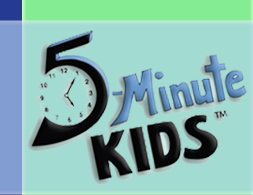 |
 |
|||||||||||||||
 5 Minute Kids™ is a program developed by Susan Sexton, a retired speech language pathologist from Lapeer County Schools, Michigan, to help children with speech sound disorders. The intent of this program is to minimize the amount of time that a child spends out of the classroom, and to improve the quality of time that the child spends working on individual speech sounds in therapy. A student enrolled in the 5 Minute Kids™ program receives individual therapy for five to seven minute sessions, two to four times per week. The child practices targeted speech sounds by repeating words, naming pictures, reading, and conversation. A necessary component of articulation therapy is the opportunity to practice speech sounds as many times as possible to achieve success. The 5-minute individual session allows the child to practice speech sounds at least 50 to 100 times, in comparison to twenty to thirty times in traditional group speech therapy. The success of this program was measured by determining the average number of months enrolled in speech therapy. This figure was calculated by using the initial and exit dates of the child’s Individual Education Plan (IEP).
1. Traditional program was based on an average of seven 30 minute sessions per month (IEP written as four to eight, 30 minute sessions monthly.) 2. The 5 Minute Kids™ program was based on an average of seven 5 minute sessions per month (IEP written as five to nine, 5 minute sessions monthly.) In addition to the increased time spent in the classroom, other advantages have been documented using this program. The speech pathologist has more opportunities to make up missed sessions because of the flexible schedule. Parents have stated that they are pleased because their child misses a minimal amount of classroom time. Teachers are pleased with the flexibility of the schedule and the minimal impact on classroom instruction. |
||||||||||||||||